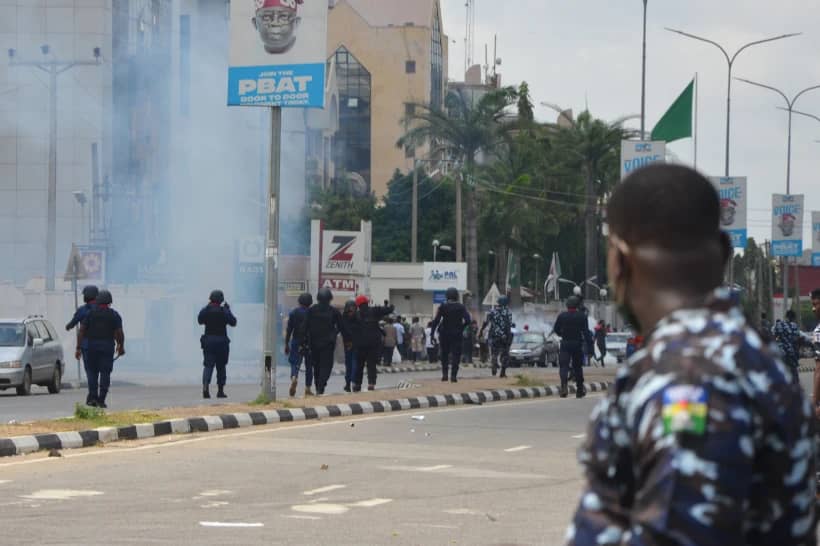ROME — The Vatican on Tuesday released a long-awaited update to the criminal section of its Code of Canon Law, the internal legal system that regulates the life of the 1.3 billion-member Catholic Church and operates independently from laws in the secular world.
In this, the oldest continuously operating legal system in the Western world, the stiffest penalties include being defrocked, excommunicated, fired or fined — or being forbidden from living in a particular place. The aim of the punishments is to “repair the scandal, restore justice and reform the offender.”
The last time the code was rewritten was in 1983, and before that in 1917. The changes published Tuesday concern only one of the code’s seven sections, or books: the penal law section, or Book VI.
In many ways the changes published Tuesday integrate piecemeal reforms that have been made over the years to address clergy sexual abuse and financial scandals that have compromised the credibility of the hierarchy in the eyes of rank-and-file faithful.
Here’s an explanation of how the church has dealt with clergy sex abuse, and the changes approved by Pope Francis after about 14 years of study.
What was wrong with the 1983 Code?
Ever since the 1983 code was first issued, lawyers and bishops complained it was completely inadequate to deal with the sexual abuse of minors since it was complicated, required time-consuming trials and gave accused priests plenty of defenses to avoid penalties or be exonerated on appeal.
The code also explicitly made conducting those trials a last resort, with other pastoral measures preferred first. That emphasis, plus the bishops’ fear of hurting the church’s reputation, their interest in holding onto their priests and their disregard for the pain caused to victims had disastrous results.
“Each influenced and gave weight to the others and together they created the mindset among the bishops that the canonical penal system simply was not worth the trouble,” canon lawyer Nick Cafardi wrote in “Before Dallas,” about the U.S. church’s reckoning with clergy abuse.
How did the Vatican respond?
After the scandal exploded publicly in the U.S., Ireland and Australia starting in the 1990s and 2000s, the Vatican in 2001 ordered bishops to send all their cases to the Holy See for review to determine how to proceed.
The Congregation for the Doctrine of the Faith under its then-prefect, Cardinal Joseph Ratzinger, the future Pope Benedict XVI, took action because he saw firsthand that bishops were ignoring the law and were moving pedophiles around from parish to parish rather than sanctioning them.
Other reforms were introduced in the following years, including one that allowed for an administrative process to sanction and even defrock priests rather than conducting full canonical trials, especially when the evidence against them was overwhelming.
What about the cover-up?
The Vatican has long been accused of having turned a blind eye to the bishops and religious superiors who allowed predator priests to remain in ministry where they could rape and molest again.
While canon law technically allowed for punishing such negligence, it was rarely if ever applied. In 2019, however, Francis issued a law explicitly requiring bishops and religious superiors to report sexual crimes and outlined how they would be investigated criminally if they failed to do so.
The new code incorporates that law by making explicit that it is now a crime under canon law to omit reporting abuse, with the sanction including being removed from office.
And what about adult victims?
The Vatican has long considered any sexual relations between a priest and an adult as sinful but consensual, believing that adults are able to offer or refuse consent purely by the nature of their age.
But amid the #MeToo movement and scandals of seminarians and nuns being sexually abused by their superiors, the Vatican has come to realize that adults can be victimized, especially when there is a power imbalance in the relationship.
Civil law has too, with some jurisdictions considering that sex is without consent if a clergyman exploits someone’s emotional dependency on him, much in the same way that some laws punish a psychiatrist who exploits a patient’s dependency for sexual reasons.
According to the new Vatican law, priests who engage in sexual acts with anyone — not just a minor or someone who lacks the use of reason — can be defrocked if they used “force, threats or abuse of his authority.” Previously, the Vatican only considered it a crime if the priest used force or threats, and lumped the provision alongside sexual abuse of a minor.
It remains to be seen how and whether the hierarchy will enforce the measure, given the difficulty in proving an abuse of authority and that another adult was victimized — the same difficulties found in the secular world.













